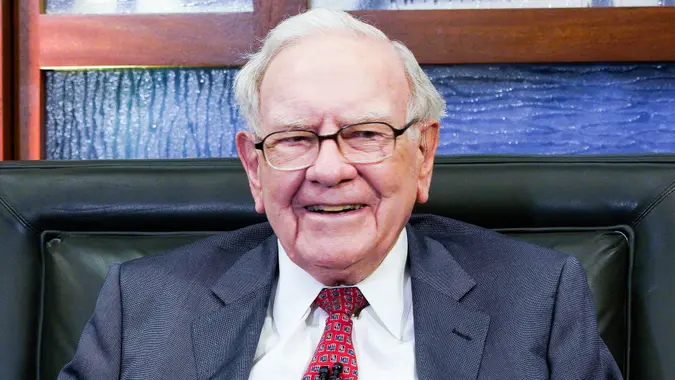Rachel Cruze: This Is the No. 1 Rule To Become a Millionaire

Commitment to Our Readers
GOBankingRates' editorial team is committed to bringing you unbiased reviews and information. We use data-driven methodologies to evaluate financial products and services - our reviews and ratings are not influenced by advertisers. You can read more about our editorial guidelines and our products and services review methodology.

20 Years
Helping You Live Richer

Reviewed
by Experts

Trusted by
Millions of Readers
Becoming a millionaire may seem like a far-off dream, especially to younger people, but with time and the right approach, it can be more achievable than you think. FOX Business’ Maria Bartiromo and personal finance expert Rachel Cruze recently shared a top strategy for making it happen.
Read More: Want To Make It to the Forbes Richest List? Here Are 10 Steps To Build Your Wealth
Find Out: 4 Things You Must Do When Your Savings Reach $50,000
You might be able to grow your savings to over $1 million with Cruze’s advice.
The Power of Employer 401(k) Plans
Cruze and Bartiromo believe the key to becoming a millionaire is participating in your employer’s 401(k) plan.
You may have heard of a “401(k) millionaire,” someone with a 401(k) balance of at least $1 million. According to Fidelity Investments’ latest retirement analysis data, the number of people achieving this goal is rising. Fidelity notes these millionaires “reach this level of retirement savings by starting early and contributing consistently over many years.”
Investing in a 401(k) doesn’t require a lot of money to start, and it offers several advantages that may help your savings grow faster than other account types.
Discover Next: Here’s the Minimum Salary Required To Be Considered Upper-Middle Class in 2025
Employer Contributions
Many employers offer a 401(k) match, contributing money to their employees’ accounts. This extra money can significantly boost your savings over time. According to Fidelity, 85% of the companies whose 401(k)s it serves offer a contribution match. The match amount differs from company to company, but Fidelity’s plans typically use a formula matching 100% of the first 3% of the planholder’s contribution and 50% of the next 2%.
Compound Returns
A 401(k) plan offers various investment options, and you decide how to distribute your funds. The earnings from these investments are reinvested, which means you benefit from compound returns, similar to compound interest, so your returns generate even more returns.
Automated Savings
401(k) contributions are often automatically deducted from your paycheck. You don’t have to rely on willpower to set that money aside.
A 401(k) Caution
To become a 401(k) millionaire, avoiding withdrawing money too early is crucial. If you take it out before you’re 59 1/2, you’ll miss out on potential growth and face penalties and taxes.
Boost Tax Benefits With a Roth Account
Retirement accounts come with contribution limits. For example, in 2025, you can contribute up to $23,500 to a 401(k), not counting employer-matched contributions. If you’re 50 or older, you’re allowed to contribute more. If you’re maxing out your 401(k), Cruze recommends also investing in a Roth IRA. You can contribute up to $7,000 annually to an IRA or $8,000 if you’re 50 or older.
In addition to saving more, using both accounts also balances your tax advantages, reducing taxes now and in retirement. Contributions to a traditional 401(k) reduce your annual income tax burden. A Roth IRA lets your money grow tax-free and provides tax-free withdrawals in retirement.
What If You Aren’t Eligible for an Employer-Sponsored 401(k) Plan?
If you’re not eligible for an employer-sponsored retirement plan, don’t worry — there are still strong options to save for retirement and build a $1 million nest egg.
An IRA is a good alternative If your employer doesn’t offer a 401(k). Once you max out your IRA contributions, taxable investment accounts provide additional opportunities for long-term growth.
If you’re self-employed, consider a Solo 401(k), which lets you contribute as both employer and employee. Alternatively, a Simplified Employee Pension IRA, commonly called a SEP IRA, allows you to contribute up to 25% of your net income up to the annual cap.
Building considerable wealth with retirement accounts isn’t out of reach, especially if you follow a few tips from Cruze. She recommends starting early, consistently contributing 15% of your income, and avoiding dipping into the money. With time and compound growth on your side, reaching that million-dollar milestone might be easier than you think.
 Written by
Written by  Edited by
Edited by 

























